Fire Safe Boxes
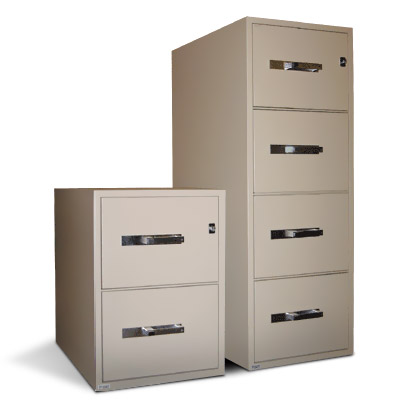

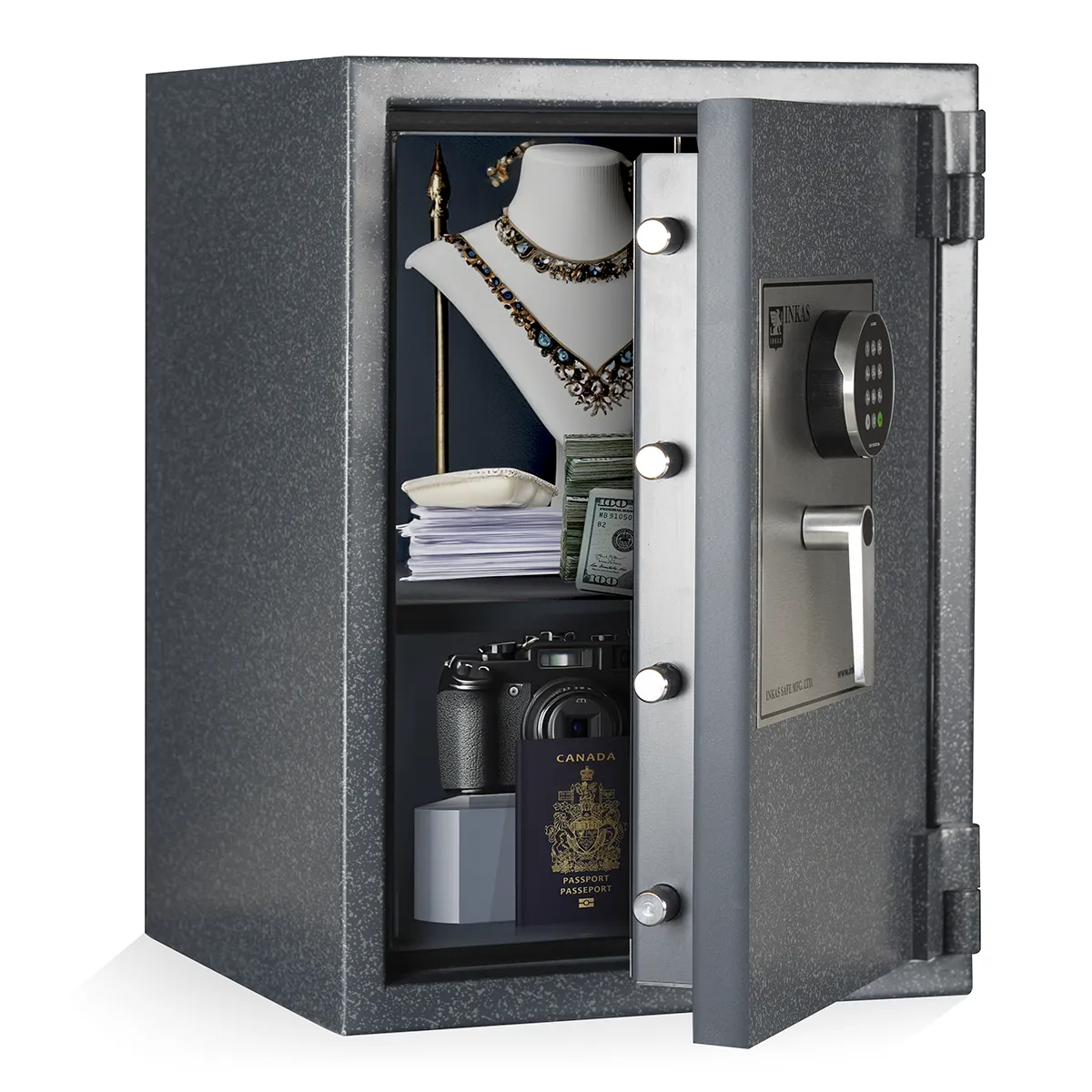
RSC-Rated Residential Burglary Safe
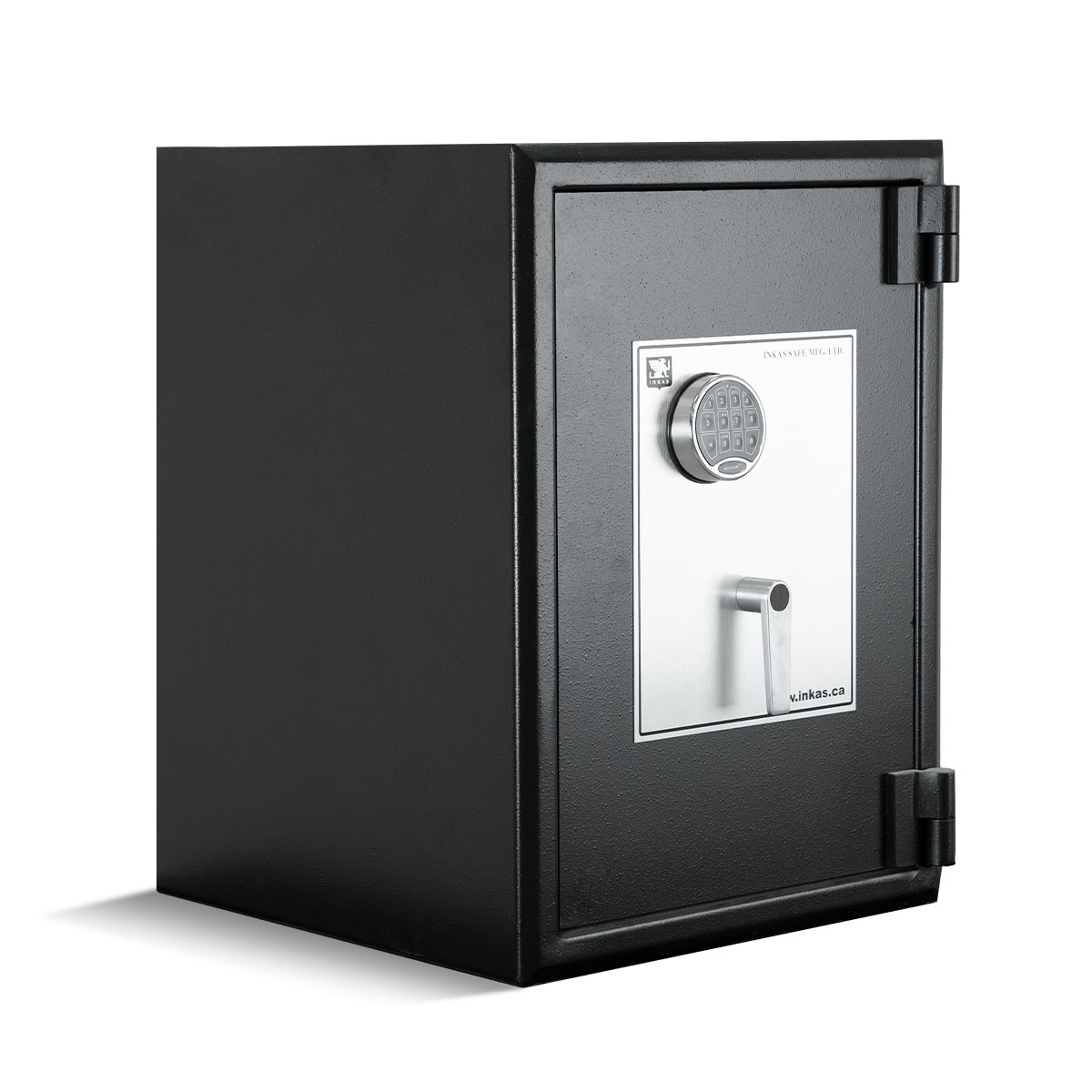
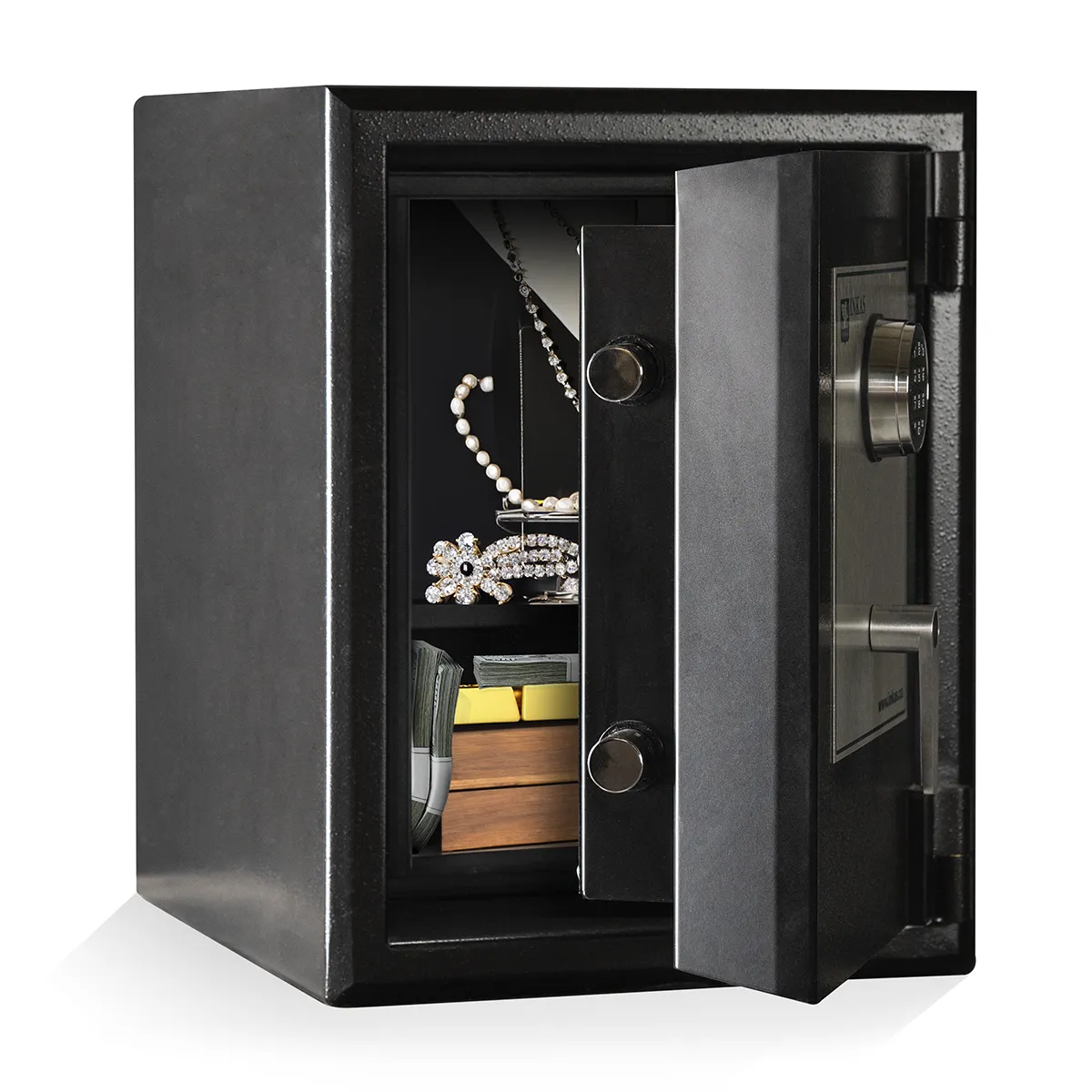
UL-TL15 High-Security Safe
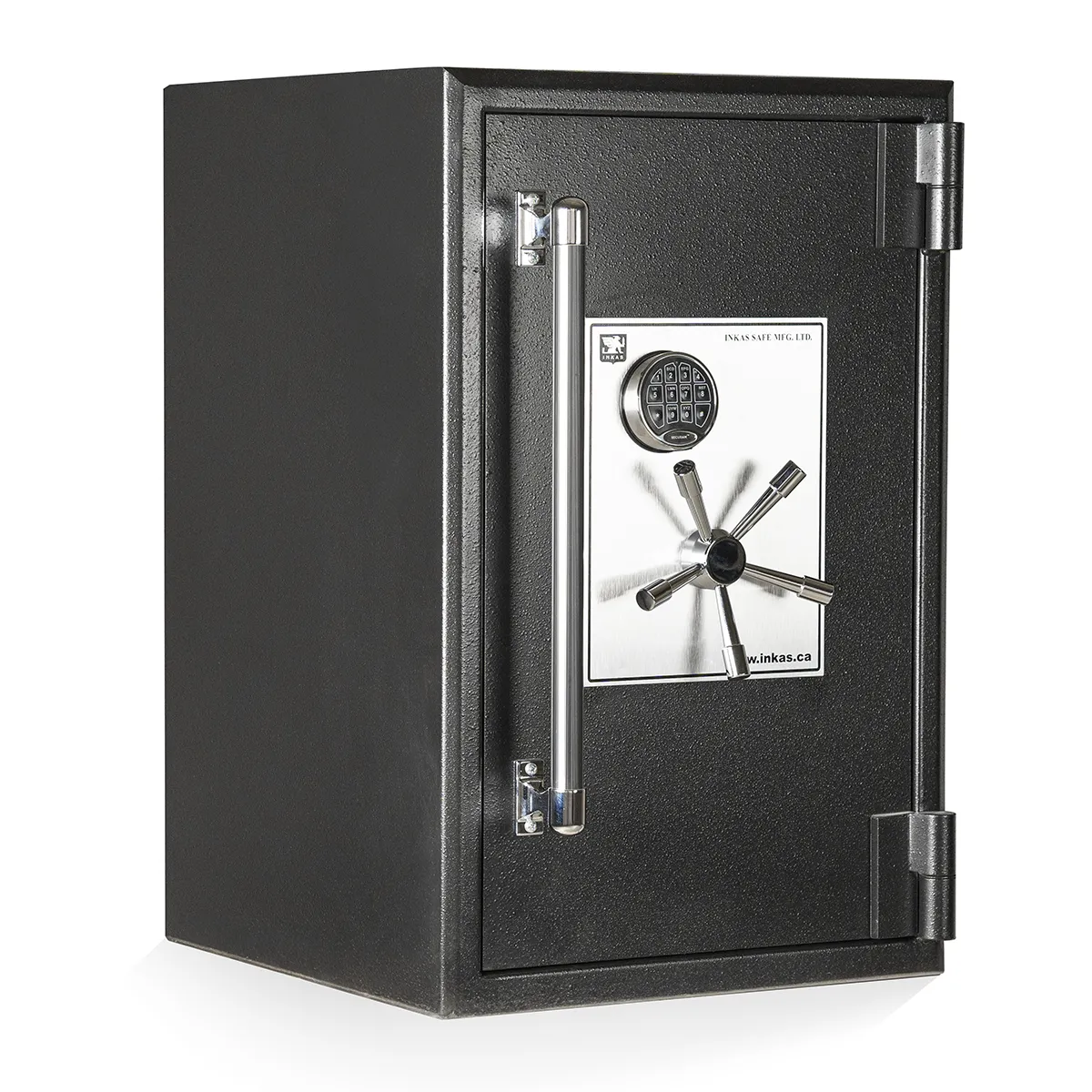
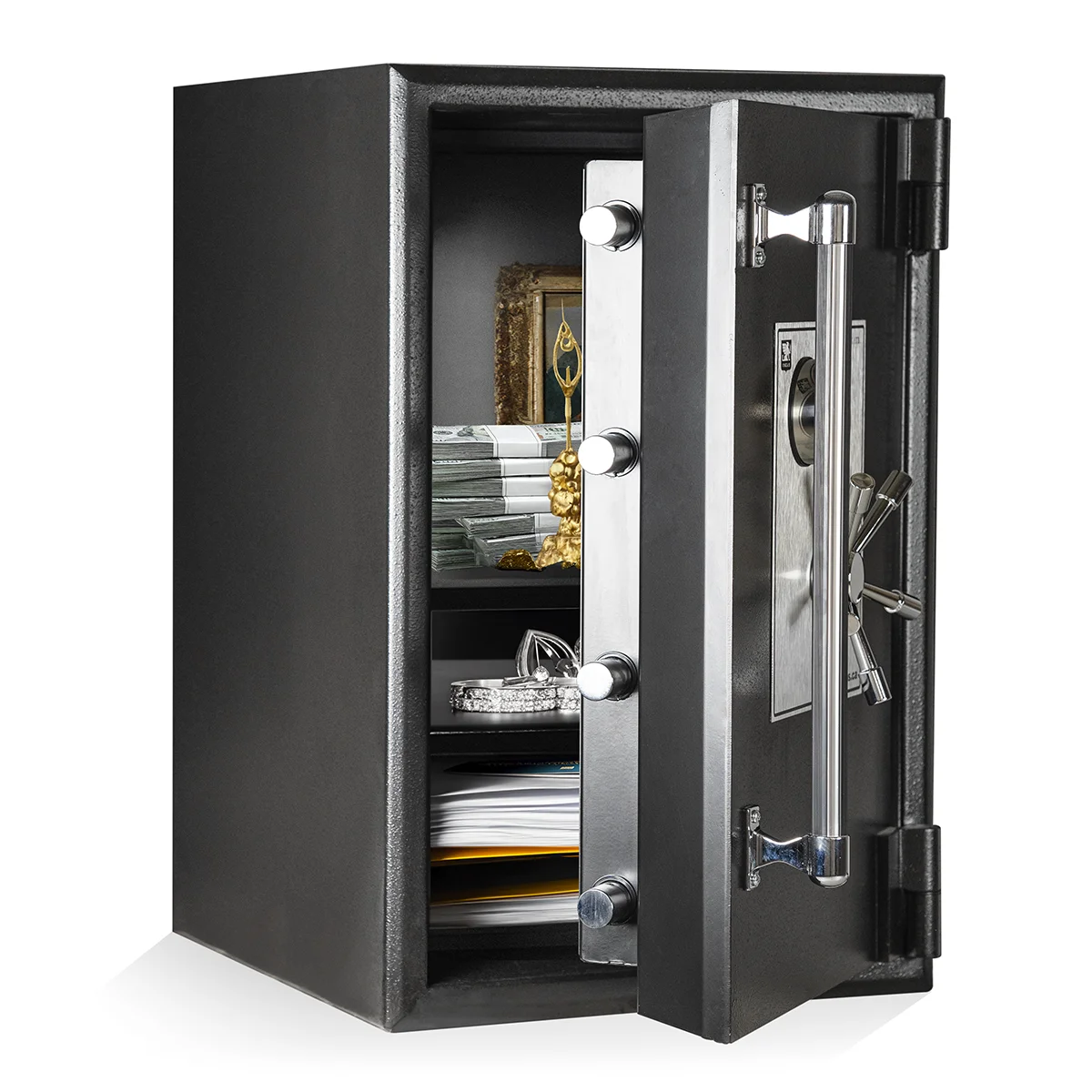
UL-TL30 High-Security Safe
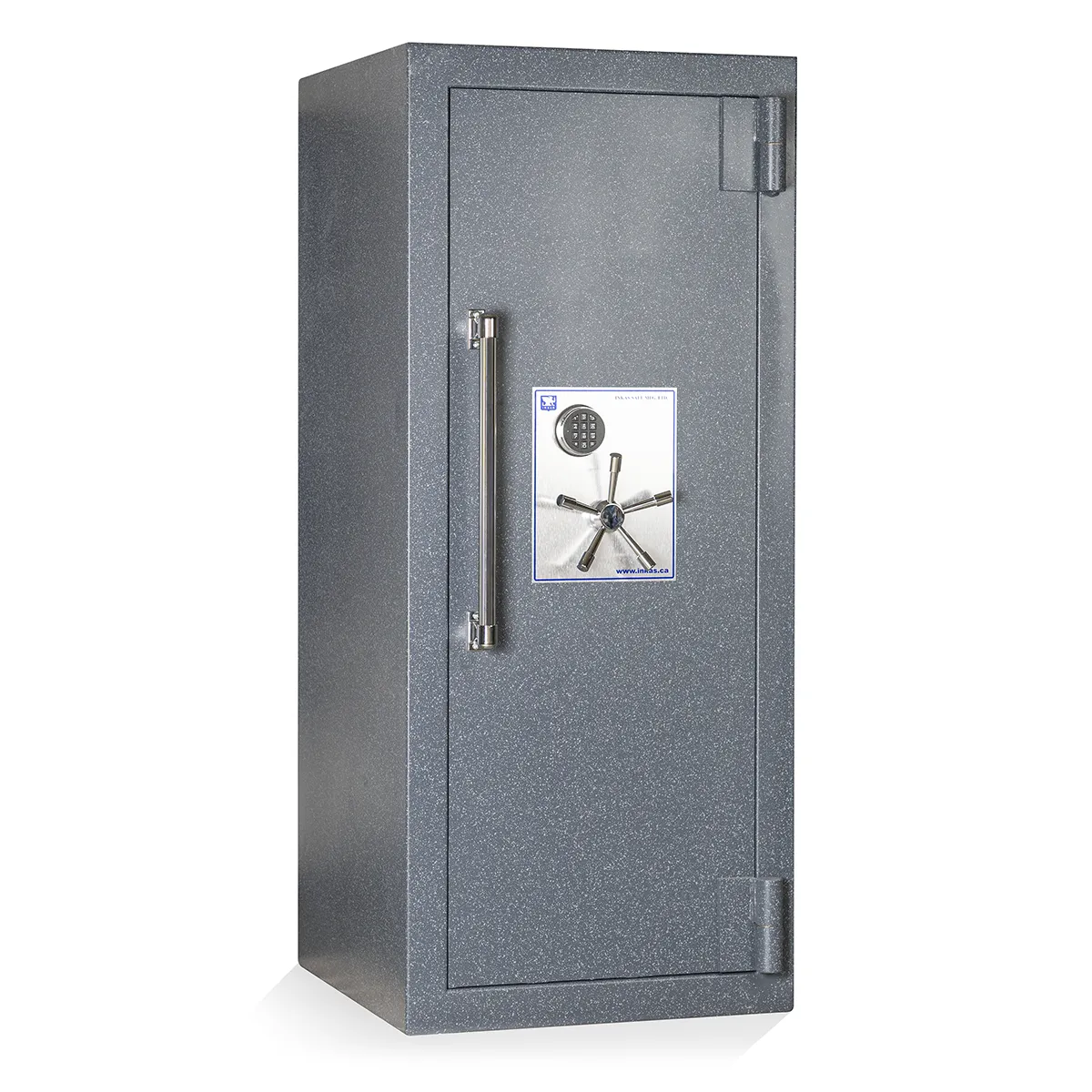
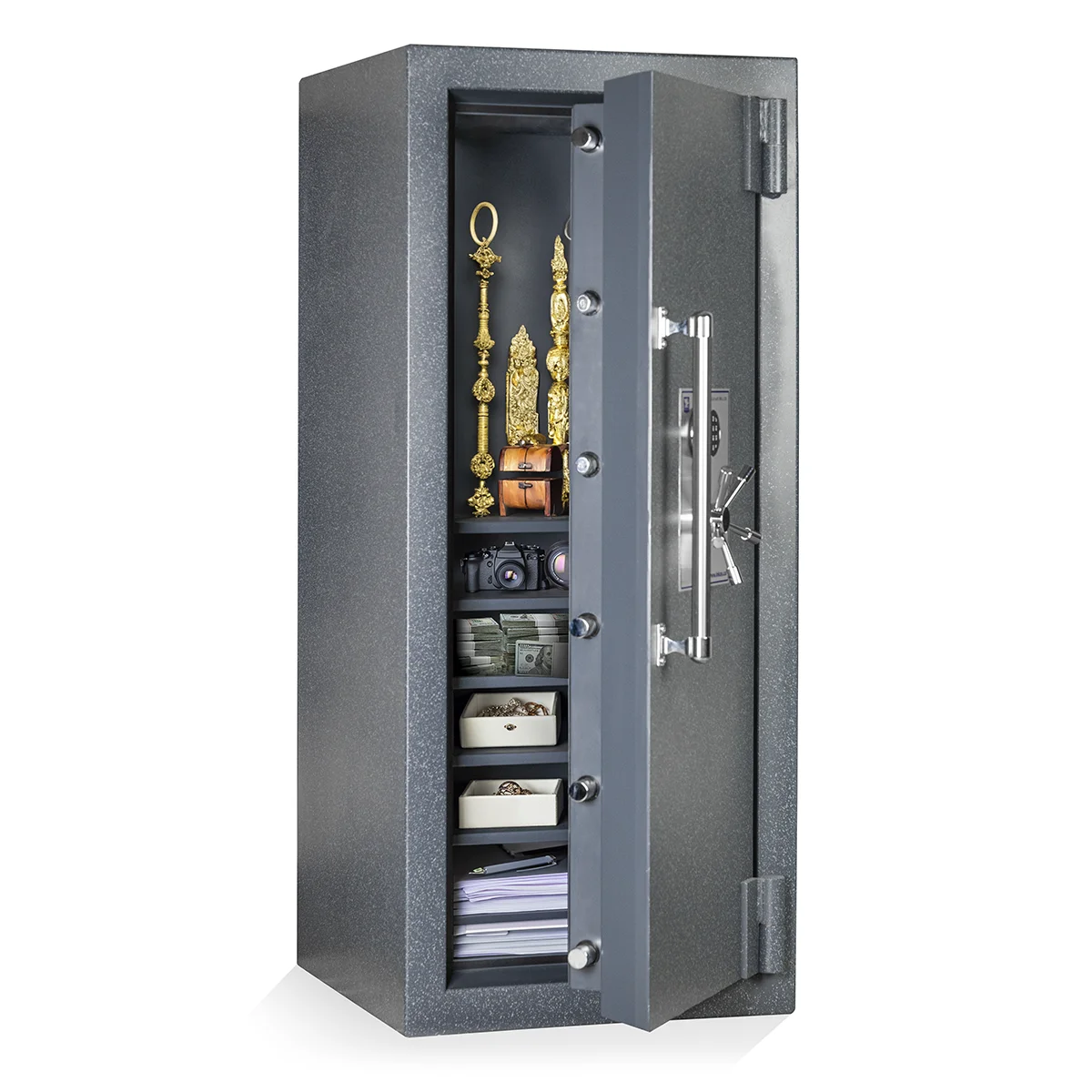
UL-TL30x6 High Security Safe
Fire Safe Boxes At INKAS Safes
A fire safe box is a secure storage container designed to protect valuable items from fire damage. These boxes are constructed with materials that can withstand extremely high temperatures, ensuring the contents inside remain safe during a fire. They often come with various features like fireproof insulation, heat-resistant seals, and sometimes even water resistance to guard against water damage during firefighting efforts.
In addition to their fire-resistant capabilities, fire safe boxes may also incorporate security features to protect against theft, such as robust locking mechanisms, which can include digital locks, combination locks, or key locks. The primary goal of a fire safe box is to safeguard important documents, cash, jewelry, digital media, and other valuable or irreplaceable items, not just from the flames and heat of a fire, but also from smoke and water damage.
Fire safe boxes are available in various sizes and fire rating levels, allowing consumers to choose a product based on their specific needs, whether for personal or business use. The fire rating usually indicates how long the safe can withstand a certain temperature without the internal temperature rising to a level that could damage the contents.
Types Of Fire Safe Boxes
Fire safes come in a variety of types to cater to different needs and spaces. Broadly, they can be categorized into portable models, floor models, and larger safes:
- Portable Models: These are smaller, lightweight safes designed for mobility and ease of handling. Portable fire safes are ideal for storing smaller valuables like passports, cash, and small digital media devices. They typically offer a fire rating of up to 1 hour and may also be waterproof. Examples include the Honeywell 1104 and the SureSeal by FireKing SS104-A, which are both certified to withstand high temperatures and offer water protection.
- Floor Models: Floor safes are larger than portable models and are designed to be more permanent fixtures in homes or offices. They offer greater storage capacity and typically have higher fire and theft protection ratings. These safes are often bolted to the floor for added security. The SentrySafe SFW205CWB is an example, offering a fireproof rating of 1 hour at 1,700 degrees Fahrenheit and also providing waterproofing capabilities.
- Larger Safes: For businesses or individuals needing to secure a large volume of items, larger safes are the best option. These safes offer the highest level of protection against fire and theft and are equipped with features like burglary-resistant designs and advanced locking mechanisms. The Steelwater AMSWFB-685, for example, is a larger safe that offers 2 hours of fire protection at 1,850 degrees Fahrenheit.
Key Features To Consider
When selecting a fire safe box, several key features should be considered:
- Size and Capacity: Determine the size and capacity required based on the items you need to protect. Consider both the external dimensions for space requirements and internal dimensions for storage capacity.
- Weight: The weight of the safe can impact its portability and installation. Portable models are lighter, while floor and larger models are significantly heavier and may require professional installation.
- Fireproofing Capabilities: Check the fire rating of the safe, which indicates how long it can withstand high temperatures. Ratings typically range from 30 minutes to 2 hours, with higher-rated safes providing better protection.
- Waterproofing Capabilities: Some fire safes also offer waterproofing, which is crucial for protecting against water damage during firefighting efforts or in flood-prone areas.
- Lock Type: Safes come with different types of locks, including key locks, combination locks, digital locks, and biometric locks. The choice depends on the level of security and convenience required.
- Additional Features: Other features to consider include interior organization options like shelves and drawers, protection against theft, and compliance with safety standards.
Choosing the right fire safe box requires careful consideration of the type of safe, size, weight, fireproofing and waterproofing capabilities, lock type, and additional features. By selecting the appropriate safe, individuals and businesses can ensure the best protection for their valuable items against fire, water, and theft.
Selecting The Right Fire Safe Box From INKAS Safes
When choosing a fire safe box from INKAS Safes, it’s important to consider several factors to ensure you select the right product for your needs. Here’s a guide to help you make an informed decision:
- Determine Your Security Level Needs: INKAS Safes offers fire safe boxes across various security levels, from Level 1 to Level 5. The higher the level, the more robust the security features. For instance, Level 5 safes, like the UL-TL30x6 High Security Safe, offer the highest protection against burglary attacks and are suitable for high-value items.
- Consider the Fire Rating: Fireproof safes from INKAS are rated based on the duration they can withstand high temperatures while maintaining a specific maximum internal temperature. These ratings range from 1 hour to 2 hours. Choose a safe with a fire rating that suits your needs, considering what you intend to store inside. For example, if you’re storing paper documents, a safe that can maintain an internal temperature below 350°F is essential.
- Assess the Safe Type: INKAS Safes offers different types of safes, including residential and commercial models. Residential safes are typically designed for personal use, while commercial safes are more suited for business applications and may offer larger storage capacities and additional security features.
- Check UL Certification: Safes certified by Underwriters Laboratories (UL) meet strict standards for burglary resistance and fire protection. This certification is an assurance of quality and reliability. Make sure the safe you choose has the appropriate UL rating for your security needs.
- Additional Features: Look for additional features that might be important to you, such as expanding door insulation layers, heat-triggered internal humidifiers, and various lock options (mechanical, electrical, biometric, etc.). These features enhance the safe’s protection capabilities and usability.
- Location for Installation: The ideal location for a fireproof safe is at the lowest possible point in a building, such as the main level or basement. This minimizes the risk of heat exposure and damage in case the upper floors collapse during a fire. Placing the safe in a corner between two exterior walls can also reduce heat exposure.
By considering these factors, you can choose an INKAS fire safe box that best fits your requirements, offering optimal protection for your valuables against fire, burglary, and other potential threats. Remember, each model has its specific features and capabilities, so it’s crucial to match the safe’s attributes with your specific needs. For a more detailed selection and purchase process, you can consult with the experts at INKAS Safes.
Special Features Of Fire Safe Boxes
Fire Rating Standards
Fire rating standards for safes are primarily about how well a safe can protect its contents in the event of a fire. The rating indicates the duration a safe can withstand high temperatures while keeping the internal temperature below a certain threshold, critical for preventing damage to the contents. For example, INKAS Safes offers fireproof safes that can maintain internal temperatures below 350°F, suitable for paper documents, jewelry, and electronic media. They are typically rated for 1 to 2 hours of fire resistance.
The fire resistance ratings are usually provided by reputable testing organizations like Underwriters Laboratories (UL), ensuring the safes meet specific standards. UL-rated safes undergo rigorous testing, including endurance, explosion, and impact tests, to ensure they can protect contents under extreme conditions.
Waterproofing
Many modern fire safes also offer waterproofing features, which are crucial in protecting against water damage, particularly during firefighting efforts or in flood-prone areas. Waterproof safes are designed to prevent water entry, keeping the contents dry and safe. Some safes even float, making them easier to retrieve in case of flooding.
Burglary-Resistant Designs
Burglary resistance is another critical aspect of modern safes. INKAS Safes, for example, provides safes with various security levels, with higher levels offering more robust protection against burglary. These safes are constructed with strong materials and feature advanced locking mechanisms to withstand different types of burglary attacks. The security level is often determined by factors like the materials used, lock type, and other security features.
Innovative Features
Innovative features in fire safes have greatly enhanced their utility and security:
- Adjustable Shelves: These allow for customizable storage space, making it easier to organize and store different types of items, from documents to valuables.
- Digital Locks: Offer high security and convenience, with options such as programmable codes, biometric scanners, and remote locking mechanisms. They provide an added layer of security compared to traditional key or combination locks.
- Key Hooks: Useful for organizing and securing important keys, these are often found in safes designed for both residential and commercial use.
- Internal Humidifiers and Insulation: Some high-end safes include heat-triggered internal humidifiers and expanding insulation layers to further protect the contents from fire and heat damage.
- Fire and Water-Resistant Materials: Utilizing composite and fire-resistant materials, these safes can withstand high temperatures and water exposure for a specified duration.
When considering fire safe boxes, it’s essential to look beyond basic fire protection and evaluate additional features like waterproofing, burglary-resistant designs, and innovative features like adjustable shelves, digital locks, and key hooks. These aspects enhance the functionality and security of the safes, making them versatile and effective in protecting valuable items under various circumstances.
Installation And Maintenance Tips For Fire Safe Boxes
Proper installation and regular maintenance are key to ensuring that your fire safe box provides the best protection and functions reliably over the long term. Here are some tips on installation and maintenance:
Installation Tips:
- Choose the Right Location: Install the safe in a location that is easily accessible to you but not obvious to potential burglars. It’s often recommended to place the safe at the lowest level of your building, like a basement, as heat rises and this could provide an additional layer of protection against fire. Additionally, placing the safe in a corner between two exterior walls can minimize heat exposure during a fire.
- Secure the Safe Properly: For floor models and larger safes, consider bolting them to the floor or wall to prevent them from being moved or carried away. This is especially important for lightweight models that could be easily transported.
- Avoid Moisture-Prone Areas: While many safes are waterproof, it’s best to avoid installing them in areas prone to moisture or flooding, as prolonged exposure to humidity can affect the safe’s contents and mechanisms.
Maintenance Tips:
- Regularly Check Locking Mechanisms: For safes with digital locks, ensure that batteries are changed regularly to avoid lockouts. For mechanical locks, periodically check that the lock is functioning smoothly and is not jammed.
- Inspect Seals and Joints: Regularly inspect the seals and joints of your safe for any signs of wear or damage. This is crucial for maintaining the safe’s fire and water resistance. If you notice any degradation, consult the manufacturer for advice on repair or replacement.
- Avoid Harsh Chemicals: When cleaning the exterior of the safe, avoid harsh chemicals that might damage the paint or metal. A damp cloth is usually sufficient to keep the safe clean.
- Lubricate Moving Parts: Periodically lubricate hinges and other moving parts to ensure they operate smoothly. This is especially important for safes that are opened infrequently.
- Check for Rust or Corrosion: In damp environments, check for signs of rust or corrosion, particularly in the locking mechanism and bolts. If rust is found, it should be addressed promptly to prevent deterioration.
- Test Fireproofing and Waterproofing: While it’s not easy to test these features without actual fire or water, you can check for certifications and renew them if necessary. Safes with UL certifications, for example, have been rigorously tested for these qualities.
- Store Safely: Avoid overfilling your safe, as this can put undue pressure on the locking mechanism and hinges. Ensure that items stored inside do not obstruct the door or locking mechanism.
- Consult the Manual: Always refer to the manufacturer’s manual for specific advice on installation and maintenance tailored to your particular model.
- Professional Inspection: Consider having your safe professionally inspected every few years to ensure it’s still providing optimal protection, particularly if it’s a model with sophisticated lock mechanisms or fireproofing technologies.
Remember, the longevity and effectiveness of your fire safe box greatly depend on proper installation and regular maintenance. These practices not only ensure the physical security of the safe but also its ability to protect contents from fire and water damage. For specific guidance on your INKAS safe, always refer to the user manual or contact INKAS directly for support.
Safety And Compliance Standards For Fire Safe Boxes
Fire safe boxes are subject to a variety of safety standards and certifications that ensure they are effective in protecting contents from fire and other hazards. Understanding these standards is crucial for selecting a safe that meets your security needs.
UL Ratings
Underwriters Laboratories (UL): UL is a global safety certification company that sets stringent standards for fire safe boxes. UL-rated safes undergo rigorous testing to ensure they meet specific fire resistance requirements.
- Fire Resistance Ratings: This rating determines how long a safe can maintain an internal temperature below a set threshold (usually 350°F) during a fire. Ratings typically range from 30 minutes to several hours. The UL Class 125, Class 150, and Class 350 ratings specify the maximum internal temperature a safe will maintain, with Class 350 being common for paper documents and electronic media.
- Burglary Ratings: UL also rates safes for burglary resistance, based on how long they can withstand a break-in attempt using various tools. Safes are tested for resistance against tools like drills, grinders, and even explosives in some cases. Ratings like TL-15, TL-30 indicate the net working time a safe should resist a burglary attempt using specific tools.
Other Important Benchmarks In Fire Safety
- Fire Endurance Test: This test measures the safe’s ability to protect its contents in extreme heat. The safe is exposed to fire for a specified period, and its performance is evaluated based on the internal temperature and humidity levels maintained.
- Explosion Hazard Test: To simulate potential explosion risks during a fire, safes are subjected to rapidly increased temperatures. A safe must withstand this test without rupturing or showing signs of structural failure.
- Impact Test: This test evaluates the safe’s integrity when subjected to falls or impacts, which can occur in structural collapses during fires. The safe is heated and then dropped from a height to simulate the impact of falling through burning floors.
Compliance With Local And International Standards
Safes must also comply with local and international safety standards, which can vary depending on the region. These standards ensure that the safes meet minimum requirements for fire resistance, burglary protection, and overall construction quality.
Why Standards And Certifications Matter
These standards and certifications are crucial for ensuring that fire safe boxes provide reliable protection under extreme conditions. They give consumers confidence that the product has been independently tested and verified to perform as advertised.
When purchasing a fire safe box, it’s important to check for these certifications and understand what they mean in terms of protection level. This knowledge can help you choose a safe that appropriately safeguards your valuables against fire, burglary, and other potential threats.
By selecting a fire safe box that adheres to these safety standards and certifications, you ensure the highest level of protection for your valuable items in the event of a fire or burglary. Always look for these certifications when choosing a safe, and consult with manufacturers like INKAS Safes, who adhere to these standards, for more detailed information and guidance
Purchasing Guide For Fire Safe Boxes
When planning to purchase a fire safe box, there are several factors and options to consider to ensure you make a well-informed decision that suits your needs.
Where To Purchase:
- Online Retailers: Websites like Amazon or specialized safe manufacturers like INKAS Safes offer a wide range of fire safe boxes with detailed product descriptions and customer reviews. Purchasing online often provides convenience and a broad selection.
- Physical Retail Stores: Home improvement stores, office supply stores, and specialty security shops often carry a variety of fire safe boxes. Shopping in person allows you to get a feel for the size and build of the safes and ask questions directly to sales staff.
- Manufacturer Direct Sales: Buying directly from manufacturers like INKAS Safes can be beneficial. They often provide detailed product knowledge, customization options, and direct warranty support.
- Specialty Security Companies: Companies that specialize in security solutions often offer a range of safes, providing expert advice tailored to your specific security needs.
Price Ranges:
The cost of fire safe boxes varies widely based on size, fire rating, security features, and brand. Basic models may start at a few hundred dollars, while high-end models with advanced features like biometric locks or higher fire ratings can reach several thousand dollars.
It’s important to balance the price with the level of protection you need. Consider the value of the items you are protecting when determining your budget.
Warranty Considerations:
Warranties are an important factor in your purchase decision. Check the duration of the warranty and what it covers. Some may cover material and workmanship defects, while others might offer a replacement in the event of a fire.
When purchasing a fire safe box, it’s crucial to research and consider the buying platform, cost, and warranty offerings. Ensure that the safe you choose meets your specific needs and comes with adequate support and warranty coverage for peace of mind.

